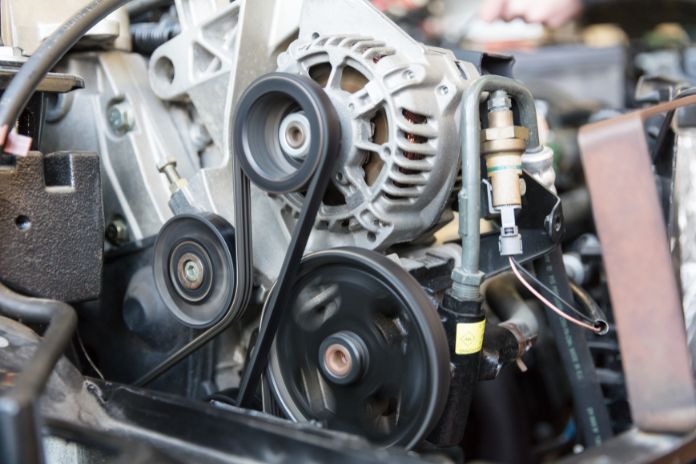
Unless you’re an automotive expert, the inner workings of your car’s engine are probably a mystery. There’s no shame in not knowing what goes on inside a car, but having some basic information can be helpful the next time you’re talking to your mechanic. Take a look at our guide to the different types of drive belts in cars.
Why Do Cars Have Belts?
Your car’s engine has many moving parts. Most of them work through pulley systems. Pulley drive systems have a couple of advantages. First, they use less mechanical power to run an entire engine, making things more efficient.
The other advantage is that if one part of the engine receives damage, the belt will snap, stopping that damage from transferring to the rest of the engine. This is a built-in failsafe that protects the most vital parts of your car.
V-Belts
If you own an older vehicle, your engine probably has several V-shaped belts powering things like the alternator, the AC compressor, and the power steering. The shape of the belts helps them dig into the wheel grooves and create torque powerful enough to drive the engine. One of the benefits of using this system is that if, for example, the AC belt snaps while you’re driving, the rest of your car will still work.
Serpentine Belts
Instead of a complicated V-belt system, newer cars tend to have just one belt that snakes its way through all the essential drive pulleys, hence the name. Car manufacturers switched to this system because it’s much easier to maintain and doesn’t take as much work to install. However, it does mean that there’s only one belt. So if it snaps, your engine won’t work.
Timing Belts
The timing belt is a crucial part of your car’s engine that works separately from the other drive systems. Timing belts have grooves that lock into the engine wheels, ensuring accuracy and torque.
The timing belt’s job is to run both the camshaft and the crankshaft, ensuring that the pistons and valves in the engine don’t collide with each other. Timing belt failure can cause significant damage to your car, so always stay on top of the maintenance cycle.
Now that you know the different types of drive belts in your car, you should look at your vehicle’s owner manual and see how often it recommends replacing the belts. Regular maintenance can save you from getting stranded at the side of the road or needing expensive repair jobs.







